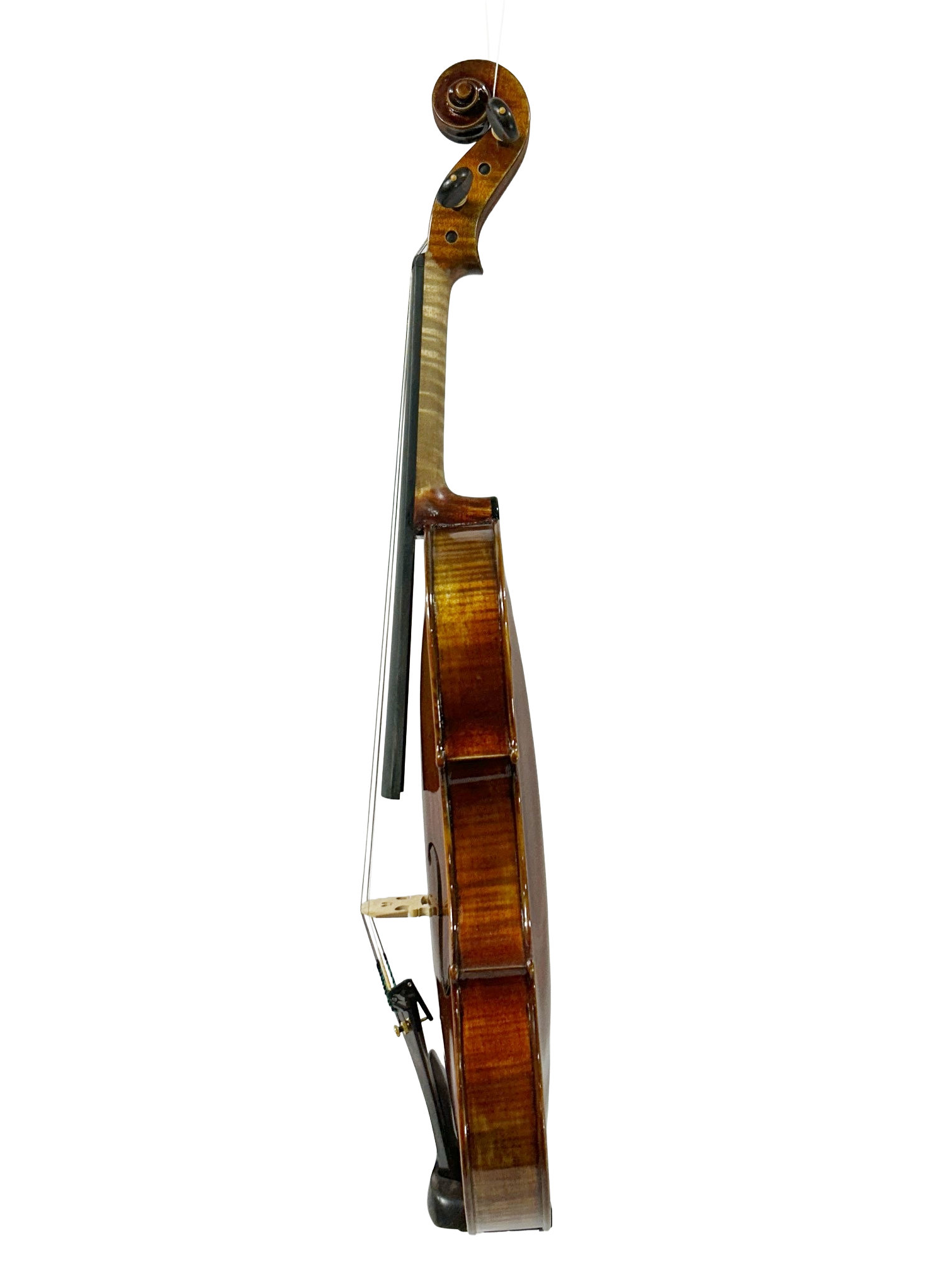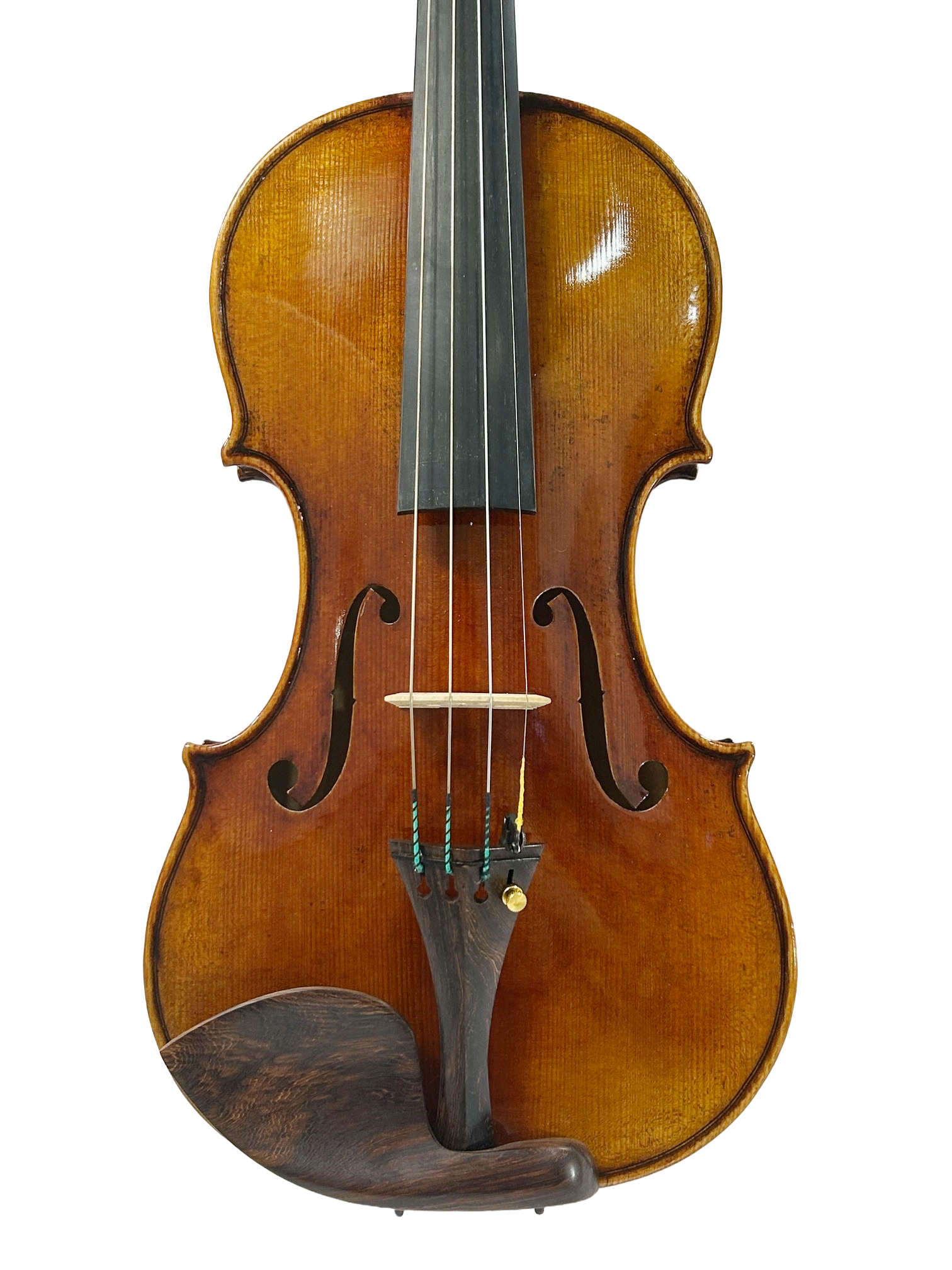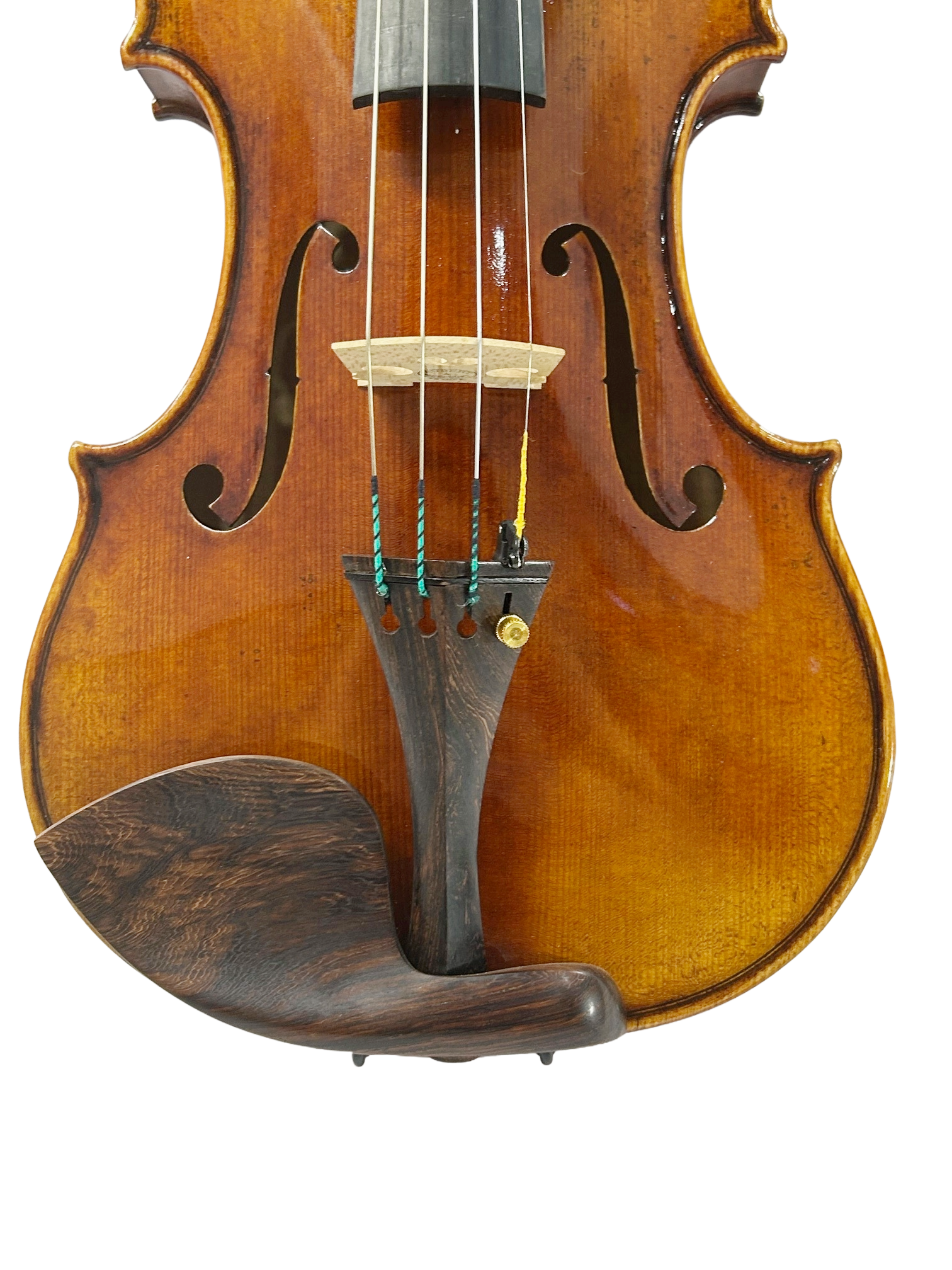 Image 1 of 16
Image 1 of 16

 Image 2 of 16
Image 2 of 16

 Image 3 of 16
Image 3 of 16

 Image 4 of 16
Image 4 of 16

 Image 5 of 16
Image 5 of 16

 Image 6 of 16
Image 6 of 16

 Image 7 of 16
Image 7 of 16

 Image 8 of 16
Image 8 of 16

 Image 9 of 16
Image 9 of 16

 Image 10 of 16
Image 10 of 16

 Image 11 of 16
Image 11 of 16

 Image 12 of 16
Image 12 of 16

 Image 13 of 16
Image 13 of 16

 Image 14 of 16
Image 14 of 16

 Image 15 of 16
Image 15 of 16

 Image 16 of 16
Image 16 of 16

















Donato Guarneri Line-Guarneri del Gesù 1735 Plowden 4/4 Size VN990G-1735P
The Story of the 1735 “Plowden” Guarneri del Gesù
In 1735, at the height of his creative powers, Giuseppe Guarneri “del Gesù” produced one of his most celebrated works: the violin now known as the “Plowden.” This instrument comes from the maker’s middle period, when his artistry balanced precision and boldness. Unlike the more rugged instruments of his later years, the Plowden shows refinement in its sculpted arching, graceful f-holes, and a luminous orange-red varnish that still glows with life nearly three centuries later.
The violin takes its name from Lady Margaret Frances Plowden, who owned the instrument in the 19th century. Its reputation, however, extends far beyond the lineage of its custodians. Early connoisseurs, including the influential Hill family of London, placed the Plowden among the finest nine examples of del Gesù’s work, praising both its beauty and its tonal power.
Over the centuries, the Plowden has been handled by some of the world’s most discerning musicians and collectors. Unlike many historic violins that have been heavily altered, it has survived in an unusually pure state, retaining its original character and vivid varnish. Its one-piece maple back, boldly flamed, and its wide-grained spruce top testify to the Cremonese tradition at its peak.
Sonically, the Plowden has enchanted performers with its velvety warmth and reed-like quality, qualities that make it both intimate and powerful. Its sound carries the unique balance of Guarneri’s genius: depth and strength without sacrificing sensitivity. For modern makers, it has served as a touchstone—most famously inspiring luthier Sam Zygmuntowicz, who studied and reproduced it in detail, describing its craftsmanship as both fresh and fearless, almost as if del Gesù had just laid down his tools.
The Plowden’s prestige has grown through the centuries, celebrated in exhibitions such as the 1994 “Violin Masterpieces of Guarneri del Gesù” at the Metropolitan Museum of Art in New York. Today it remains one of the most admired violins in the world—not only for its place in history, but also for the enduring beauty and voice it still offers, a living testament to the genius of Giuseppe Guarneri del Gesù.
The Story of the 1735 “Plowden” Guarneri del Gesù
In 1735, at the height of his creative powers, Giuseppe Guarneri “del Gesù” produced one of his most celebrated works: the violin now known as the “Plowden.” This instrument comes from the maker’s middle period, when his artistry balanced precision and boldness. Unlike the more rugged instruments of his later years, the Plowden shows refinement in its sculpted arching, graceful f-holes, and a luminous orange-red varnish that still glows with life nearly three centuries later.
The violin takes its name from Lady Margaret Frances Plowden, who owned the instrument in the 19th century. Its reputation, however, extends far beyond the lineage of its custodians. Early connoisseurs, including the influential Hill family of London, placed the Plowden among the finest nine examples of del Gesù’s work, praising both its beauty and its tonal power.
Over the centuries, the Plowden has been handled by some of the world’s most discerning musicians and collectors. Unlike many historic violins that have been heavily altered, it has survived in an unusually pure state, retaining its original character and vivid varnish. Its one-piece maple back, boldly flamed, and its wide-grained spruce top testify to the Cremonese tradition at its peak.
Sonically, the Plowden has enchanted performers with its velvety warmth and reed-like quality, qualities that make it both intimate and powerful. Its sound carries the unique balance of Guarneri’s genius: depth and strength without sacrificing sensitivity. For modern makers, it has served as a touchstone—most famously inspiring luthier Sam Zygmuntowicz, who studied and reproduced it in detail, describing its craftsmanship as both fresh and fearless, almost as if del Gesù had just laid down his tools.
The Plowden’s prestige has grown through the centuries, celebrated in exhibitions such as the 1994 “Violin Masterpieces of Guarneri del Gesù” at the Metropolitan Museum of Art in New York. Today it remains one of the most admired violins in the world—not only for its place in history, but also for the enduring beauty and voice it still offers, a living testament to the genius of Giuseppe Guarneri del Gesù.

